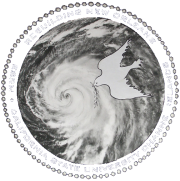Over the course of my academic career I have had numerous opportunities to travel and visit culturally and environmentally significant locations. All had a significant impact me, but none were like New Orleans. As I reflect on the trip, I am overwhelmed with emotions. We were able to participate in numerous activities that both benefited the people and places of Louisiana while simultaneously deeply impacting our own perspectives. I was 12 years old when Hurricane Katrina hit the Gulf Coast. I remember hearing snippets of news reports and information about the destruction and chaotic state of the region in the wake of the flooding, but not enough to fully understand. Up until the time I enrolled in this class, I still had that same limited knowledge of Hurricane Katrina and its aftermath. My eyes were opened to a disturbing reality once I began to comprehend what had actually occurred in Louisiana preceding and following the storm. As the winds and rain faded into memory, the people were left with nothing and relatively little emergency assistance. Levees burst, homes were knocked off of their foundations, lives lost, and families torn apart. Entire neighborhoods were flattened. Debris mixed with untold volumes of family memories, littering the ground. This year arks the ten year anniversary of Hurricane Katrina.
Visiting the coast revealed to me truth about the storm and subsequent recovery of the people, neighborhoods, environment, and culture of New Orleans and southern Louisiana. Evidence of Katrina remained apparent as we drove through coastal cities. You could hear it in the voices of locals as they described the effect these event had (and are still having) on their daily lives. Talking to Carol Arsenoe as we planted our community garden in Buras struck me the most. His home (and entire town) lies directly between two levees: one holding back the waters of the Mississippi River, the other the waters of the Gulf of Mexico. When asked why he returned to such a vulnerable, low lying area that will surely be in the path of destruction again, he replied simply: “This is my home. I can’t imagine living anywhere else.” It hit me then that what we were doing was truly service. We were serving the people of Louisiana who more often than not have a deep connection with their land and cities. It is all we can do to protect it and save it for future generations.
The swamp, I realized, is one of the most unique ecosystems I have had the privilege of understanding and experiencing. It was all I imagined it would be and more. The species that inhabit these humid, warm, and inundated regions are unique (to say the least), different from anything I have seen before. It was breathtaking! When all was quiet, the forest’s peacefulness would manifest as a calm that would wash over me. Clearing my mind of numbers and science, I could feel at peace with the environment and think past the hard labor to better know what I was doing was imperative to preserve that gorgeous ecosystem. In addition, the comradery among my fellow students was strengthened on this trip. Previous friendships grew stronger and new friendships blossomed. These are people I will know and remember for the rest of my life. Our joint respect and passion for service, research, and learning was palpable.
The harsh reality is that this swampland may well disappear within our lifetime. It saddens me to think that my grandchildren might not be able see this beautiful swamp. The opportunity we had to travel to this region of our country was a once in a lifetime experience. Though our visit was short, I feel I experienced much of what New Orleans and the region had to offer, though that doesn’t hinder my thirst to explore the region more. I will never forget my time in New Orleans. And with that…CORNBREAD!
